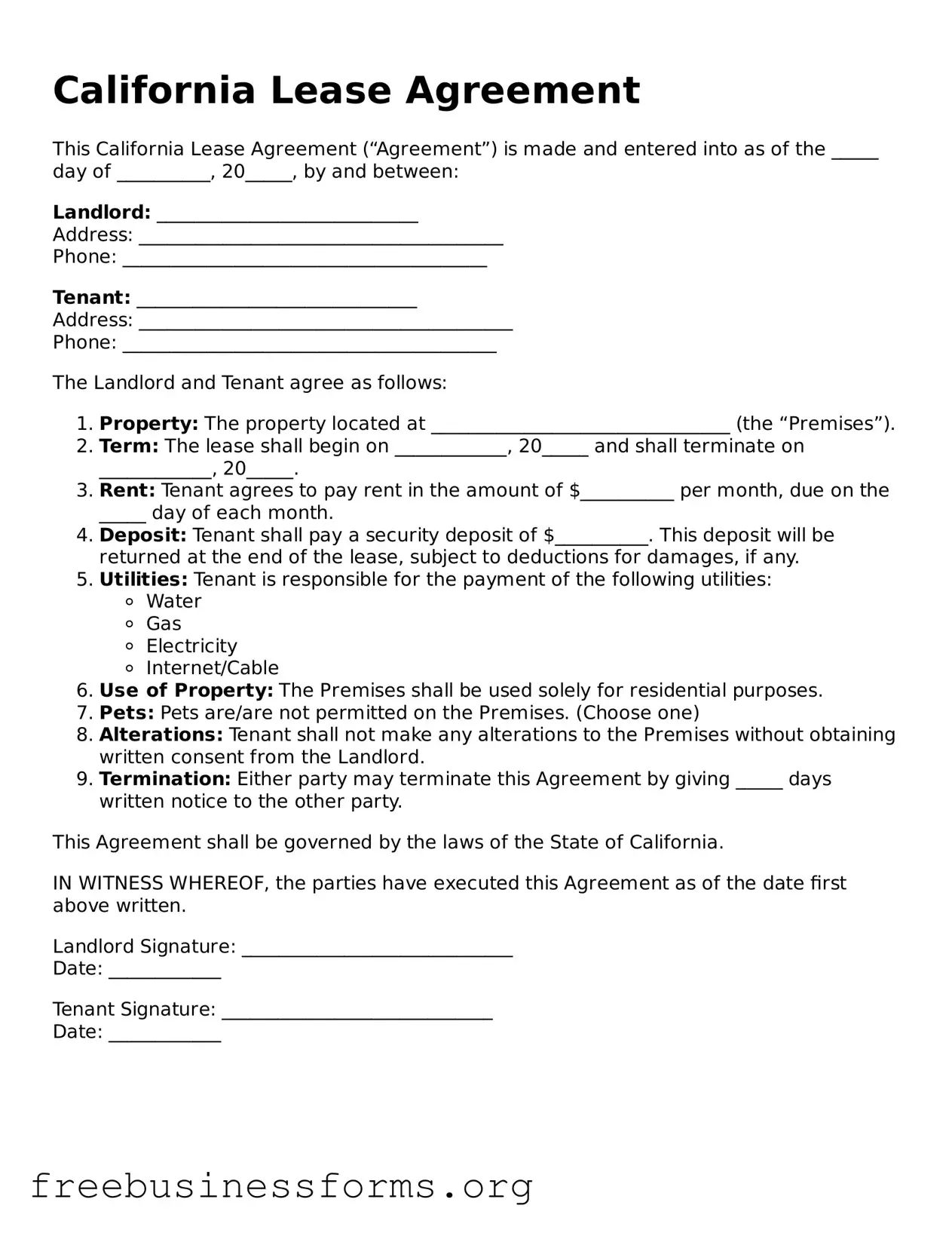California Lease Agreement
This California Lease Agreement (“Agreement”) is made and entered into as of the _____ day of __________, 20_____, by and between:
Landlord: ____________________________
Address: _______________________________________
Phone: _______________________________________
Tenant: ______________________________
Address: ________________________________________
Phone: ________________________________________
The Landlord and Tenant agree as follows:
- Property: The property located at ________________________________ (the “Premises”).
- Term: The lease shall begin on ____________, 20_____ and shall terminate on ____________, 20_____.
- Rent: Tenant agrees to pay rent in the amount of $__________ per month, due on the _____ day of each month.
- Deposit: Tenant shall pay a security deposit of $__________. This deposit will be returned at the end of the lease, subject to deductions for damages, if any.
- Utilities: Tenant is responsible for the payment of the following utilities:
- Water
- Gas
- Electricity
- Internet/Cable
- Use of Property: The Premises shall be used solely for residential purposes.
- Pets: Pets are/are not permitted on the Premises. (Choose one)
- Alterations: Tenant shall not make any alterations to the Premises without obtaining written consent from the Landlord.
- Termination: Either party may terminate this Agreement by giving _____ days written notice to the other party.
This Agreement shall be governed by the laws of the State of California.
IN WITNESS WHEREOF, the parties have executed this Agreement as of the date first above written.
Landlord Signature: _____________________________
Date: ____________
Tenant Signature: _____________________________
Date: ____________
